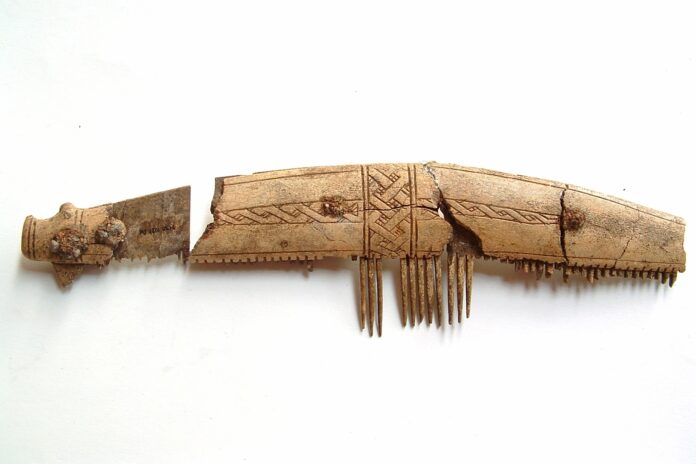Archaeologists have revealed an “extraordinary and unique” collection of medieval artifacts, including a set of “Viking” combs, found during excavations in an English town.
The collection, which consists of 1,341 bone and antler objects, as well as 2,400 fragments of waste, is detailed in a new book published on March 27. The materials were uncovered during excavations conducted in the historic core of Ipswich, a town in Suffolk, East Anglia, between 1974 and 1994.
Despite being found decades ago, the vast majority of the objects are being described and published for the first time in the scientific literature, Ian Riddler, one of the authors of the book, told Newsweek.
Most of the objects date to between the 7th and 12th centuries. The book, published by the Suffolk County Council Archaeological Service (SCCAS) in partnership with Historic England, highlights the significance of Ipswich as a place of regional craft production over a long period.
Suffolk County Council Archaeological Service
“It was always our intention that the book had a European outlook and placed Ipswich in the center of a developing early medieval world for one particular craft. Ipswich has a fabulous collection of objects of antler and bone,” Riddler and book co-author Nicola Trzaska-Nartowski said in a press release.
“The range of objects is extraordinary and unique in the U.K. There are several items that indicate links abroad, particularly northern France, Frisia (what we now know as parts of the Netherlands, Germany and Denmark) and southern Scandinavia.”
The collection of bone and antler finds includes more than 500 objects related to textile manufacturing, such as spindle whorls and needles.
The remaining objects encompass a variety of categories. They include 60 dress pins, several “beautifully-decorated” strap-ends, flutes, gaming pieces, spoons, a whalebone fishing float, and a sword grip, among others.
The collection also features an assemblage of just over 440 combs, 13 of which are of Scandinavian origin. The Scandinavian combs, which date to the period from around A.D. 870-925, are of particular significance.
They were produced during the Viking Age, a period in medieval history between roughly the late 8th and 11th centuries, when the Vikings—a Scandinavian seafaring people—raided, colonized, and traded widely across Europe and beyond.
“The Ipswich Scandinavian comb collection is small in a sense at 13 items but it is still the largest assemblage from England, beating both York and London. Only Dublin has more combs of this type in the British Isles,” Riddler told Newsweek.
“Prior to our publication, Ipswich did not feature on any maps of Scandinavian and Anglo-Scandinavian England at all. We are very proud to have put the town firmly on the map now,” he said.
In archaeological terms, the authors suspect that these combs demonstrate a strong link, in particular, with the important site of Hedeby, formerly in Denmark but now located in Germany.
“They are very recognizable as Scandinavian combs,” Riddle said. “From visual examination, some of them appear to have been made from reindeer antler, which also makes them resolutely Scandinavian.”
These combs indicate the presence of Scandinavian peoples in Ipswich around the end of the 9th century.
“The term ‘Viking’ is a tricky one because its origins and precise meaning are a little uncertain,” Riddler said. “For some, it is taken to mean raiders and traders from Scandinavia, rather than settlers.”
“The importance of these combs is that their dating suggests that they go back to the time at which the [Viking] Great Army was beginning to overwinter in East Anglia. They may belong to the first Scandinavian settlers in Ipswich, but they could even reflect raiding and temporary early occupation.”
Do you have a tip on a science story that Newsweek should be covering? Do you have a question about archaeology? Let us know via [email protected].
Uncommon Knowledge
Newsweek is committed to challenging conventional wisdom and finding connections in the search for common ground.
Newsweek is committed to challenging conventional wisdom and finding connections in the search for common ground.


